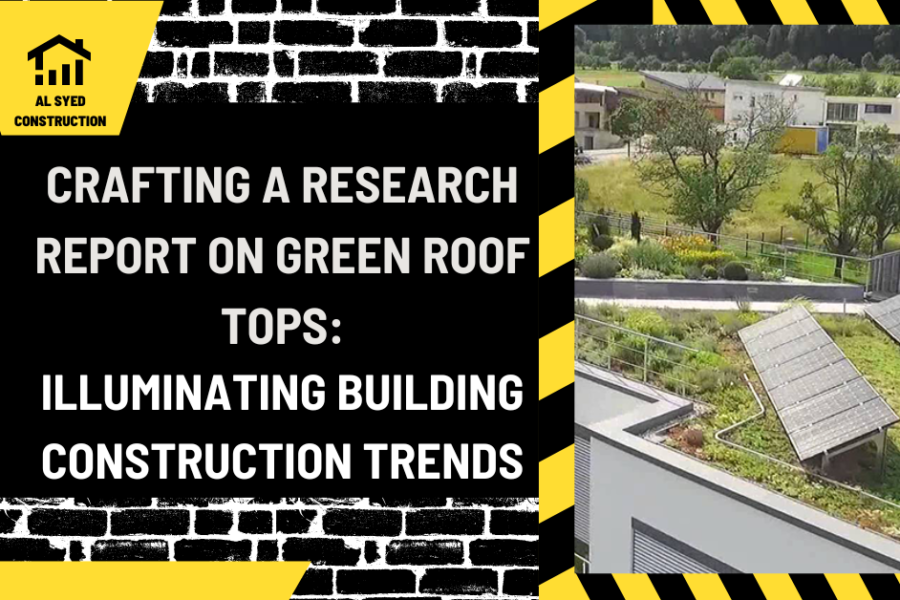Crafting a Research Report on Green Roof Tops: Illuminating Building Construction Trends
Table of Contents
Introduction
In the quest for sustainable building practices, green roof tops have emerged as a prominent trend in modern construction. These living roofs not only enhance a building’s aesthetic appeal but also offer numerous environmental benefits, including improved insulation, reduced urban heat island effect, and increased biodiversity. This article provides a comprehensive guide on creating a research report that explores the trends, benefits, and challenges associated with green roof tops in building construction.
Defining the Scope and Objectives
Identifying the Research Focus
The first step in crafting a research report is to clearly define the scope and objectives. Determine whether the report will focus on the architectural design, environmental impact, economic benefits, or a combination of these aspects related to green roof tops.
Setting Research Goals
Establish specific goals for the research, such as assessing the adoption rate of green roofs in urban areas, evaluating their effectiveness in energy conservation, or analyzing the cost-benefit ratio of their implementation in commercial buildings.
Conducting Thorough Research
Gathering Data and Information
Utilize a variety of sources, including academic journals, industry reports, case studies, and expert interviews, to gather comprehensive data on green roof top trends. Pay attention to recent advancements, regional variations, and notable projects that exemplify successful green roof implementations.
Analyzing Trends and Patterns
Analyze the collected data to identify emerging trends and patterns in green roof construction. Look for correlations between green roof adoption and factors such as climate, building regulations, and economic incentives.
Structuring the Report
Organizing Content and Findings
Organize the report into clear sections, starting with an introduction that outlines the research objectives, followed by a literature review, methodology, analysis of findings, and a conclusion that summarizes the key insights.
Incorporating Visuals and Case Studies
Enhance the report’s readability and impact by including visual aids such as charts, graphs, and photographs of green roof projects. Incorporate case studies to provide real-world examples of successful green roof implementations and their benefits.
Addressing Challenges and Recommendations
Discussing Potential Barriers
Identify and discuss potential challenges in the adoption of green roof tops, such as high initial costs, maintenance requirements, and structural limitations. Provide an analysis of how these challenges can be addressed or mitigated.
Offering Recommendations and Future Outlook
Conclude the report with recommendations for stakeholders, including architects, builders, and policymakers, on promoting and optimizing the use of green roof tops. Offer insights into future trends and the potential evolution of green roofing practices.
Conclusion
Creating a research report on building construction trends using green roof tops requires a systematic approach, from defining the scope to conducting in-depth research and analysis. By highlighting the environmental and economic benefits, addressing challenges, and providing actionable recommendations, the report can contribute to the advancement of sustainable building practices and the wider adoption of green roof tops in the construction industry.




